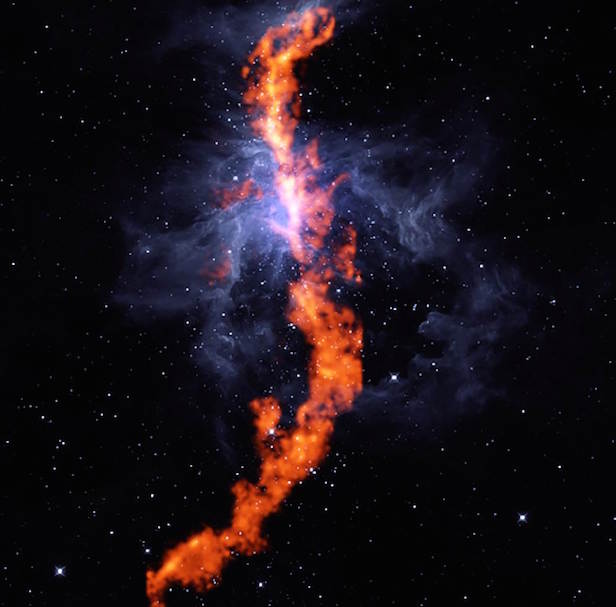Astronomers discover star-forming filament in Orion Nebula
Radio observations show a 50-light-year feature filled with ammonia, deep within the stellar nursery

The composite image contains the filament of ammonia molecules (red), and infrared image of the Orion Nebula (blue) taken by NASA’s Wide-field Infrared Survey Explore (WISE) telescope. Image credit: R. Friesen, Dunlap Institute; J. Pineda, MPE; GBO/AUI/NSF
By imaging the radio emission from the Orion Nebula, astronomers have discovered a 50-light-year long filament of gas, capable of harbouring many stars. Taken as part of the Green Bank Ammonia Survey (GAS), this will paint a picture of the temperatures and motions of the compound within these energetic stellar nurseries.
“We still don’t understand in detail how large clouds of gas in our galaxy collapse to form new stars, but ammonia is a excellent tracer of dense, star-forming gas,’ says Rachel Friesen of the University of Toronto, who is involved in the observation. “These large ammonia maps will allow us to track the motions and temperature of the densest gas. The is critical to assessing whether gas clouds and filaments are stable, or are undergoing collapse on their way to forming new stars.”
The ambition for GAS is to survey the major, nearby star-forming regions in the northern half of the Gould Belt. The Gould Belt is a collection of giant and bright stars that form a ring around the sky and of which runs through the Orion constellation. The results should clarify how these gas clouds generate such immense stars.
Keep up to date with the latest space news in All About Space – available every month for just £4.99. Alternatively you can subscribe here for a fraction of the price!




